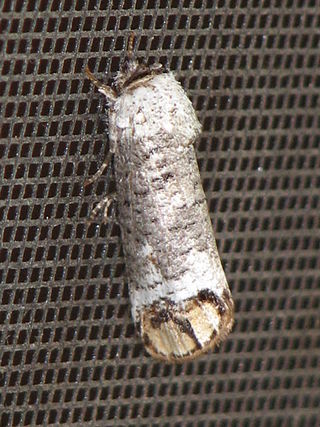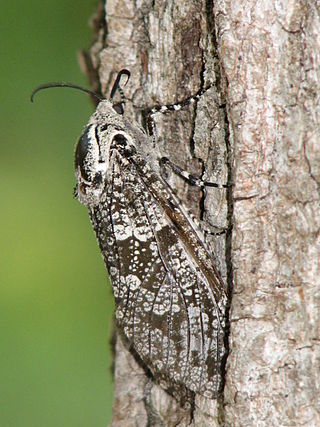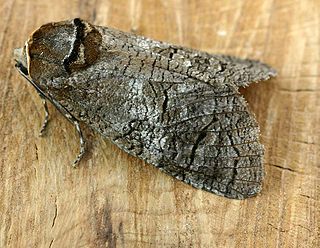Subfamily Cossinae

- Cossus cossus , goat moth — throughout (nationally scarce B) ‡
Species listed in the 2007 UK Biodiversity Action Plan (BAP) [1] are indicated by a double-dagger symbol (‡).
The family Cossidae comprises the "leopard and goat moths", of which three occur in Great Britain:

Species listed in the 2007 UK Biodiversity Action Plan (BAP) [1] are indicated by a double-dagger symbol (‡).

Hamearis lucina, the Duke of Burgundy, the only member of the genus Hamearis, is a European butterfly in the family Riodinidae. For many years, it was known as the "Duke of Burgundy fritillary", because the adult's chequered pattern is strongly reminiscent of "true" fritillaries of the family Nymphalidae.

The heath fritillary is a butterfly of the family Nymphalidae. It is found throughout the Palaearctic from western Europe to Japan, in heathland, grassland, and in coppiced woodland. Its association with coppiced woodland earned it the name "woodman's follower" in parts of the UK. It is considered a threatened species in the UK and Germany, but not Europe-wide or globally.

The Cossidae, the cossid millers or carpenter millers, make up a family of mostly large miller moths. This family contains over 110 genera with almost 700 known species, and many more species await description. Carpenter millers are nocturnal Lepidoptera found worldwide, except the Southeast Asian subfamily Ratardinae, which is mostly active during the day.

The Cossinae are the nominate subfamily of the Cossidae. The caterpillars of several Cossinae species, such as the carpenterworm and the goat moth, are significant pests. On the other hand, in Chile the caterpillars of the Chilean moth are collected on a commercial scale for sale as fishing bait and terrarium pet food; they are usually called "butterworms" in international trade.

Cossus cossus, the goat moth, is a moth of the family Cossidae. It is found in Northern Africa, Asia and Europe.

Phragmataecia castaneae, the reed leopard or giant borer, is a moth of the family Cossidae. It was described by Jacob Hübner in 1790. It is found in central and southern Europe, the Middle East, the Caucasus, Transcaucasia, Turkmenistan, Kazakhstan, north-western Iran, Iraq, Syria, Sri Lanka, Madagascar, India, Lebanon, Turkey, western China, south-western Siberia, Egypt, Tunisia and Morocco.

Cossus is a genus of moths in the family Cossidae described by Johan Christian Fabricius in 1793.

Celypha woodiana also known as the mistletoe marble is a moth of the family Tortricidae found in Europe. In Great Britain the moth is a priority species in the United Kingdom Biodiversity Action Plan. The species was described by Charles Golding Barrett who named it in honour of John Henry Wood.